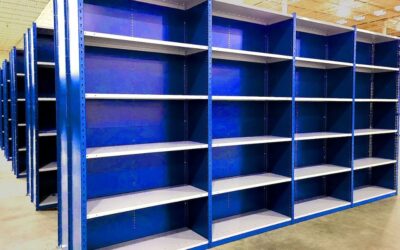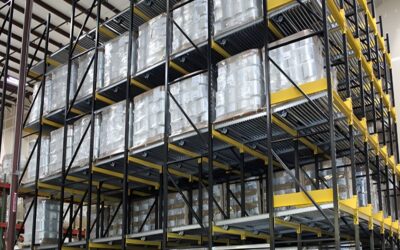Achieving Operational Excellence Through Warehouse Racking Installation

In the fast-paced world of logistics, efficiency is paramount. Warehouse managers continually seek ways to streamline operations and optimize space utilization. One fundamental strategy is the installation of warehouse racking systems. These systems serve as the backbone of efficient storage, facilitating organized inventory management and seamless workflow. Let’s delve into the essentials of warehouse racking installation and how it improves overall operational efficiency.
What are Warehouse Racking Installation Systems?
Warehouse racking systems are structures designed to support the systematic storage of goods. They come in various types, including selective pallet racks, drive-in racks, cantilever racks, and push-back racks, each tailored to suit specific storage needs. Selecting the appropriate racking system depends on factors such as inventory size, weight, accessibility requirements, and available space.
Planning and Design
Effective storage racking installation begins with careful planning and design. This phase involves assessing the warehouse layout, inventory characteristics, and operational workflows to determine the most suitable racking configuration. Factors such as aisle width, load capacity, and vertical clearance are carefully considered to ensure optimal space utilization while maintaining safety standards.
Professional Installation Process
Once the planning phase is complete, the actual installation process commences. Experienced installation teams follow a systematic approach, starting with assembling uprights, beams, and braces according to manufacturer specifications. Attention to detail is crucial during this installation phase to ensure structural integrity and load-bearing capacity. Advanced tools and equipment expedite the installation process while maintaining precision and accuracy. Safety remains a top priority throughout installation, with teams adhering to strict protocols to mitigate potential hazards and minimize downtime.
Safety Compliance
Warehouse racking installation involves risks, including structural failures, falls, and material handling accidents. To mitigate these risks, adherence to safety standards and regulations is non-negotiable. Installation teams undergo rigorous training on safety protocols and best practices. They have personal protective equipment (PPE) and fall protection gear. Regular inspections and maintenance routines further safeguard against potential hazards. Thus, ensuring a secure working environment for warehouse personnel.
Improving Space Utilization
Adequate storage racking installation isn’t just about erecting racks; it’s about maximizing space utilization without compromising accessibility or safety. Strategic placement of racks, aisles, and loading zones optimizes workflow efficiency. Thus, reducing travel times and minimizing congestion. Vertical space through mezzanine installations or double-deck racking expands storage capacity without expanding the warehouse footprint. Businesses can seamlessly accommodate growth and scale operations by harnessing every square foot of available space.
Streamlining Inventory Management
A well-designed racking system improves inventory management by providing clear organization and easy access to stored items. With designated locations for each product SKU, inventory tracking becomes more efficient, reducing the likelihood of errors and stock discrepancies. Moreover, this streamlines order fulfillment and inventory replenishment, ultimately improving customer satisfaction.
Adaptability and Scalability
One of the advantages of modern warehouse racking systems is their adaptability and scalability. As business needs to evolve and inventory requirements change, racking configurations can be easily modified or expanded to accommodate growth. Whether adding new racks, adjusting shelf heights, or reconfiguring aisle layouts, the modular nature of racking systems allows for flexibility and future-proofing.
Improving Workflow Efficiency
The layout and design of warehouse racking directly impact workflow efficiency. Warehouse personnel can fulfill orders swiftly and accurately by organizing inventory logically and optimizing pick paths. Implementing techniques such as ABC classification or zone picking further streamlines operations, allowing batch picking and order consolidation. Additionally, integrating automation and robotics into racking systems improves picking accuracy and throughput. Hence, allowing warehouses to meet evolving customer demands with agility.
Maintenance and Optimization
Regular maintenance is essential to ensure warehouse racking systems’ continued efficiency and safety. Inspections should be conducted periodically to easily identify any signs of wear, damage, or structural issues. Additionally, ongoing optimization efforts, such as reorganizing inventory and fine-tuning storage configurations, help maximize the racking system’s benefits over time.
Conclusion
Latest Blogs
How Modular Cabinets Enhance Warehouse Inventory Control
For more flexibility and management in your warehouse, discover how modular cabinets can improve workflow and inventory control with these features.
How Modular Cabinets Enhance Warehouse Inventory Control
For more flexibility and management in your warehouse, discover how modular cabinets can improve workflow and inventory control with these features.
Important Questions To Ask Before Hiring Mezzanine Builders
To achieve a layout that boosts work productivity, find out what kind of questions you should ask your mezzanine builders before they work in your warehouse.
Effective Strategies for Efficient Pallet Rack Installation
To optimize your warehouse layout, discover how to efficiently install a pallet rack system that maintains and improves work performance across your business.
Questions?
Let’s Chat About Your Warehouse Project Today!
Or all us at 515-635-1555
Save time. We will contact you
Provide your details, and we’ll help you find exactly what you need


